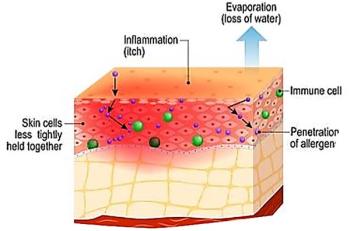
Cured Meats Called Factor in COPD Etiology
NEW YORK -- Eating too much bacon and sausage may increase the risk of chronic obstructive pulmonary disease, found researchers here.
NEW YORK, April 23 -- Eating too much bacon and sausage may increase the risk of chronic obstructive pulmonary disease, found researchers here.
In a large population-based study, those who ate cured meats 14 or more times a month were nearly 80% more likely to develop COPD than those who ate none, reported Rui Jiang, M.D., Dr.P.H., of Columbia, and colleagues in the second April issue of the American Journal of Respiratory and Critical Care Medicine.
The nitrites used in meats such as bacon, lunch meats, and sausage generate reactive nitrogen species that can cause damage to the lung, at least in animal models, they wrote. But no human studies had explored the possible link between cured meat and obstructive lung damage.
To fill the gap, Dr. Jiang and colleagues turned to the third National Health and Nutrition Examination Survey (NHANES III), conducted from 1988 through 1994.
Among the more than 33,000 participants in NHANES III, the researchers found 7,352 who were 45 or older and for whom adequate information existed, both in terms of consumption of cured meat and objective spirometric measures of lung function.
The participants were divided into five groups -- those who never ate cured meats, and those who did so one or two times a month, three or four times a month, five to 13 times a month, and 14 times a month or more.
The researchers found some demographic differences based on cured meat consumption. "Individuals who consumed cured meats frequently were more likely to be male, of lower socioeconomic status, to be tobacco users, and were less likely to report physician-diagnosed asthma than individuals who never consumed cured meats," Dr. Jiang said.
"Those who consumed cured meats more frequently had lower intakes of vitamin C, beta-carotene, fish, fruits, vegetables, and vitamin or mineral supplements," he said. "They also had higher intakes of vitamin E and total energy."
But the key question was whether lung function was associated with eating cured meats. (Ham wasn't included in this analysis. Although it counts as a cured meat, it was lumped with pork in the NHANES questions, rather than with other cured meats.)
After adjusting for a range of possible confounding factors, including smoking, total calories in the diet, and the use of dietary supplements, the researchers found that eating cured meats was inversely associated with forced expiratory volume in one second (FEV1) and with the ratio of FEV1 to forced vital capacity (FVC), but not with FVC itself.
Specifically, compared with those who did not eat any cured meats:
- Those in the lowest consumption quintile (one or two times a month) had a decline of 37.6 mL in FEV1.
- Those eating cured meats three or four times a month saw a decline of 11.5 mL.
- Those eating the foods five to 13 times a month had a fall of 42.0 mL.
- And those in the highest quintile - 14 or more times a month - saw their FEV1 fall by 110 mL.
- The corresponding differences for FEV1/FVC were minus 0.91%, minus 0.54%, minus 1.13%, and minus 2.13%.
- Both trends were statistically significant at P
Newsletter
Enhance your clinical practice with the Patient Care newsletter, offering the latest evidence-based guidelines, diagnostic insights, and treatment strategies for primary care physicians.































































































































































































































































































































